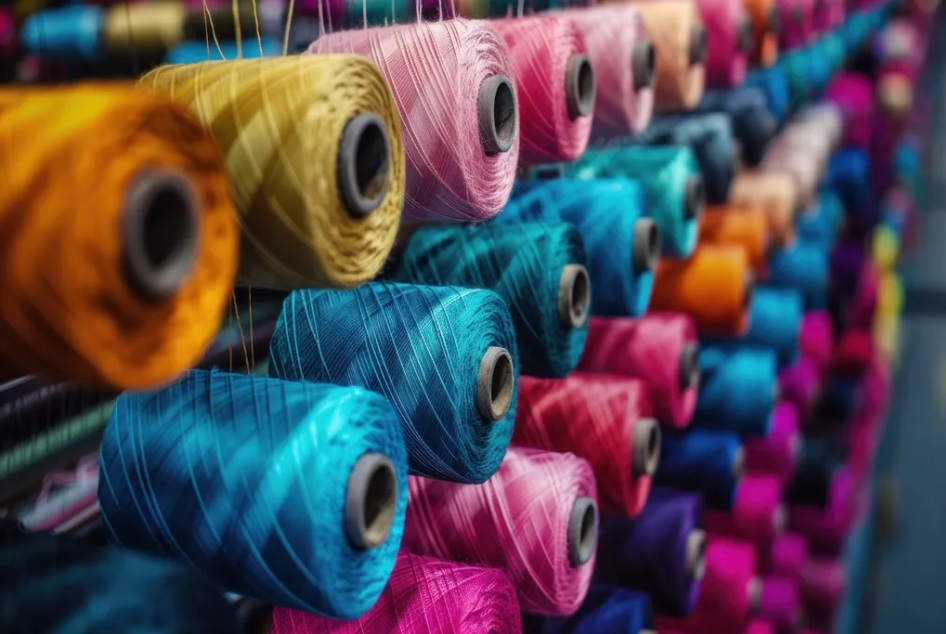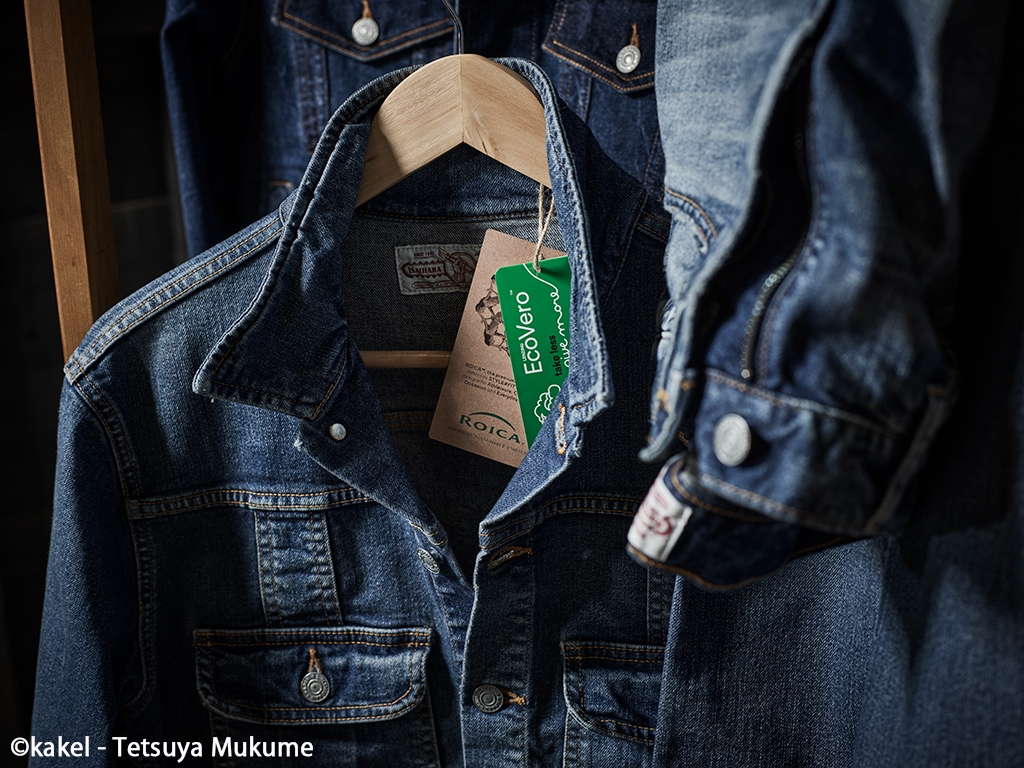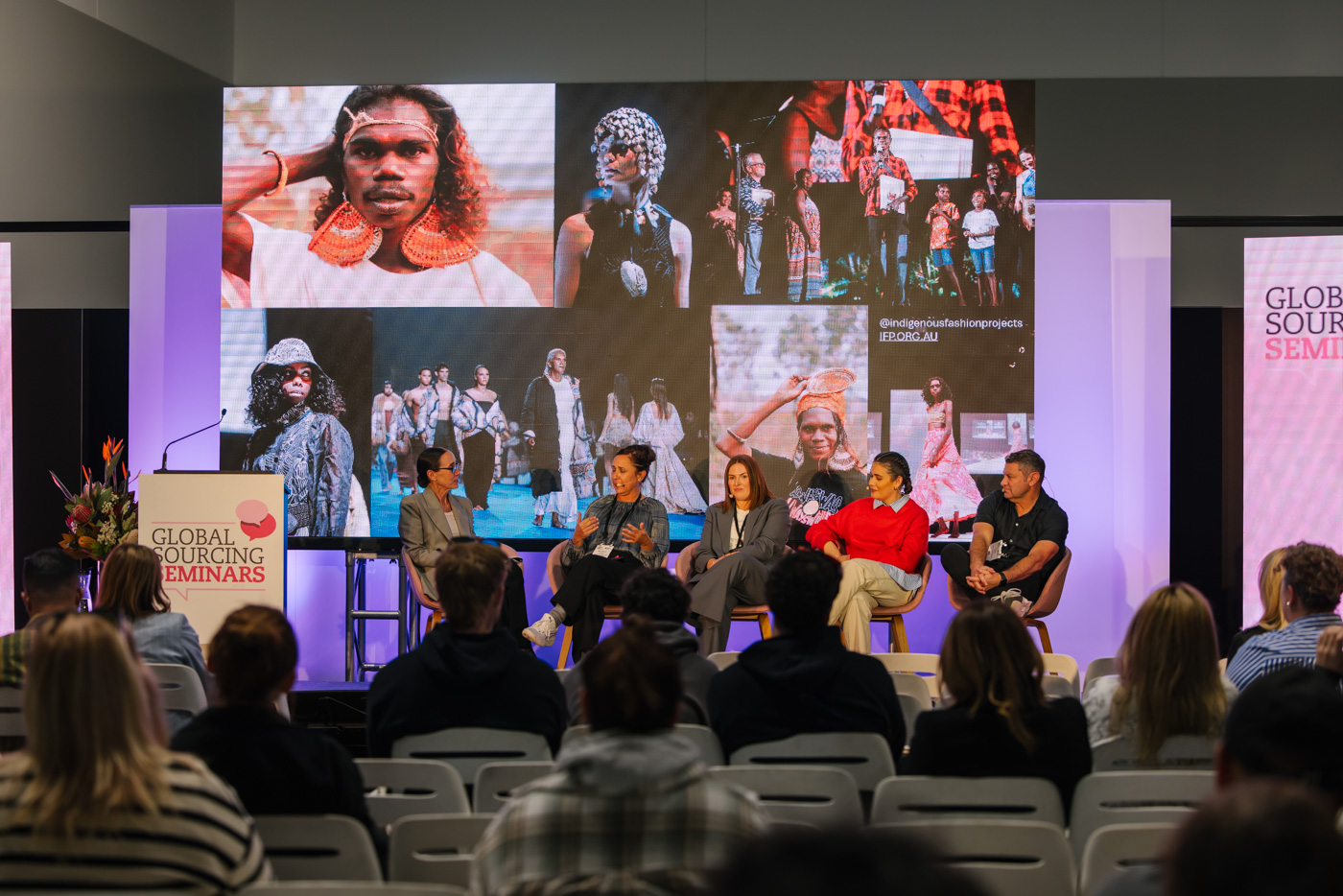FW
Around 19 fashion companies from Bangladesh including suppliers, buying houses and manufacturers from the leather and clothing industries participated in this year’s Fashion World Tokyo (FaW) 2024 expo.
Held at Tokyo Big Sight, Japan, from Oct 15–17, 2024, the expo showcased a wide range of fashion clothing, bags, shoes, fabrics, leather, accessories, and global sourcing options.
All major exporters of leather and ready-made garments (RMG) participated in the event, with Bangladesh regularly represented through the Export Promotion Bureau (EPB). The Bangladesh Pavilion was inaugurated by Shah Asif Rahman, Chargé d’Affaires, Bangladesh Embassy in Japan.
Emphasising on the importance of Japan as a profitable market for Bangladeshi goods, Rahman encouraged local business owners to expand market share by launching new products catering to the tastes of Japanese customers.
Marking its first quarterly sales drop since the pandemic, amid weakening demand in China and Japan, French luxury giant LVMH reported a 3 per cent decline in sales during Q3, FY25. The company generated €19.08 billion ($20.8 billion) in revenuesduring the three months ending in Sep 2024.
This figure fell short of the consensus estimate of 2 per cent organic growth, as cited by Barclays. Analyst Luca Solca, Bernstein remarks, LVMH ‘badly’ undershot expectations, with ‘misses across the board.’
A first from a major luxury company for the quarter, the sales report comes after weeks of volatility in luxury stocks. Recent stimulus measures in China briefly sparked hopes for a recovery, but Chinese consumer confidence remains at historic lows, says Jean-Jacques Guiony, Chief Financial Officer, LVMH.
Along with a larger sales drop at Italian luxury brand Ferragamo, LVMH's report is likely to add to market uncertainty, opines Flavio Cereda, Co-Manager –Luxury Brands Investment Strategy, GAM.
The company's fashion and leather goods division, which includes iconic brands like Louis Vuitton and Dior, posted a 5 per cent sales decline, missing forecasts of 4 per cent growth and marking its first sales drop since 2020. This division accounts for nearly half of LVMH's total revenue and around three-quarters of its recurring profit.
In Asia, excluding Japan, where China is the dominant market, sales declined by 16 per cent from a 14 per cent in the previous quarter.Meanwhile, in Japan, the company’s sales growth slowed sharply to 20 per cent, from a 57 per cent increase in the previous quarter, partly due to the stronger yen.
The results reflect a more pronounced slowdown than expected in the luxury sector, with analysts like Piral Dadhania from RBC Capital predicting a negative market response. UBS had already forecasted that the third quarter would be the weakest for the luxury sector in four years, projecting a 1 per cent Y-o-Y decline in organic sales.
Despite a reduction in acreage, India's cotton production for the 2024-25 cropping season is expected to remain constant at last year’s levels as timely rainfall and lower pest pressure will compensate for the decrease in the area under cultivation.
Data from the Agriculture Ministry also shows, India’s cotton production improved to 325.22 lakh bales, each weighing 170 kg in 2023-24. Pest attacks were less severe this season, with pink bollworm (PBW) and sucking pests being significantly reduced. The use of hybrid cotton varieties resistant to sucking pests also aids in pest management, though PBW remains a potential concern in northern regions.
On the other hand, India cotton acreage decreased by 11 lakh hectares (lh) to 112.76 lakh hectaresfrom the previous year’s 123.71 lakh hectare.However, YG Prasad, Director, ICAR-Central Institute of Cotton Research, notes, the crop is in better condition than last year and continues to improve. Higher yields will lead to a production level comparable to the previous year, he anticipates.
Bhagirath Chaudhary, Director, South Asia Biotech Centre, highlights, reduced PBW infestation in the North has led to improved cottonseed quality with infestation in the Central and South regions coming under control. However, the issue of root rot requires immediate attention, he says, adding, the 2024 Kharif season would hopefully to reverse the losses experienced in recent years.
Anand Poppat, a broker from Gujarat, estimates, this year crop size could reach 361 lakh bales due to increased yields. Pradeep Jain, President, Khandesh Gin Press Factory Owners and Traders Development Association, Jalgaon, adds, crop conditions in the Khandesh region are excellent with better quality and yields this year.
Overall crop health remains promising across key cotton-producing states like Gujarat, Maharashtra, Madhya Pradesh, Telangana, Andhra Pradesh, and Karnataka. However, with the crop delayed by a month in some regions, final predictions on the total output are still premature.
A homegrown exporter of bed sheets, bed linen and quilts, Indo Count Industries has acquired its second overseas company within a month of acquiring a stake in Fluvitex USA Inc.
The company has bought a stake in another pillows and filled products manufacturer, Modern Home for $11.7 million. Registered in Delaware, Modern Home has a factory in Phoenix, Arizona produces nearly 8 million pillows annually.
Indo Count Industries had earlier bought an 81 per cent stake in the Ohio-based pillow and quilt manufacturer Fluvitex USA Inc for $19.63 million. It plans to buy the remaining 19 per cent shares of Fluvitex for $4.6 million over the next five years, taking the total deal value to $24.23 million. This acquisition adds a capacity of 5 million pillows and 1.5 million quilts to Indo Count’s portfolio.
Indo Count opines, these back-to-back acquisitions would help the company establish an integrated utility bedding business in the North American market. They would also increase Indo Count’s total manufacturing capacity in the US to 13 million pillows and an additional capacity of 1.5 million quilts annually.
Set up 25 years ago, Indo Count is led by Anil Kumar Jain, Promoter and Executive Chairman, Mohit Jain, Vice chairman and Kailash R Lalpuria, CEO.
The company owns a retail arm, Indo Count Retail Ventures in India which manages the home textiles brand ‘Boutique Living.’ It operates across several verticals in the textiles space including spinning, weaving and processing.
The Indian Government has launched the new Textile Policy 2024 to boost the sector’s growthby offering a series of financial incentives and support mechanism.
Focusing on two key areas including technical textiles, including clothing and apparel, and manufacturing processes such as weaving and dyeing, the policy offers capital subsidies in the range of 10 per cent to 35 per cent of eligible fixed capital investments, with a cap of Rs 100 crores, depending on the region and activity.
Additionally, the policy also offers edit-linked interest subsidies of 5 per cent- 7 per cent for a duration of 5 to 8 years, with an annual limit of 2 per cent to 3 per cent. Businesses will also receive Rs 1 per unit of electricity for five years, applicable to power sourced from Discoms or renewable energy.
For employees, the policy offers a wage assistance of Rs 3,000 to Rs 5,000 per month for women and Rs 2,000 to Rs 4,000 for men, based on their roles. It provides Self-help group (SHG) members with funds of Rs 5,000 per month for three months of training and payroll support of up to 25 per cent of job work turnover for five years.
The policy also addresses quality certification, energy and water conservation savings, and technological advancements by providing technology acquisition support.
A major highlight of the policy is its focus on new industrial units employing at least 4,000 registered workers under the Employee Provident Fund (EPF) scheme, with at least 1,000 of those employees being women. These units will be provided with capital subsidies of 25 per cent to 35 per cent, capped at Rs 150 crore, along with credit-linked interest subsidies of 7 per cent to 8 per cent for up to eight years, with an annual cap of 3 per cent.
Further, the policy offers incentives including electricity tariff subsidies, with a maximum annual limit of Rs 15 crore for group captive renewable energy sources. Female employees in these units will receive wage assistance in the range of Rs 3,000 to Rs 5,000 per month, while male employees will receive Rs 2,000 to Rs 4,000 for up to ten years.
To help boost employment and competitiveness in the textile sector, self-help groups (SHGs) will also receive financial support in similar categories. Overall, the Textile Policy 2024 seeks to promote employment, especially among women, and improve the industry’s competitiveness through financial incentives and technological support.
A Chinese textile company specialising in the production and distribution of various fabrics and textile material, Yixing Textile Co unveiled the world’s largest pair of jeans at Fumian in China.
Setting a new Guinness World Book Record, this enormous pair of jeans measures around 68 m (223 ft) in height and 35 m (115 ft) in width. Ithas a length of around76.34 m (250 ft 5 in) and a waist circumference of 58.164 m (190 ft 10 in).
Made from 5.5 km (18,044 ft 6 in) of fabric, the denimfeatures a 7.8-m-long (25 ft 59 in) zipper and a 1.2-m-diameter (3 ft 94 in) stainless steel button, weighing in at a remarkable 3.6 tons (7936.64 lb).It was made in a period of 18 days by over 30 skilled garment workers.
Before this, the largest pair of jeans measuring 65.50 m (214 ft 10 in) tall and 42.70 m (140 ft 1 in) wide was unveiled by Paris Perú (Peru), in Lima, Peru, on Feb 19, 2019.

China's move for a more favorable import policy for Bangladeshi goods, particularly in the apparel and textile sector, is expected to significantly alter the trade dynamics between the two nations. This shift has the potential to reshape the regional landscape, impacting other key players like India and Vietnam.
For decades, China has been a dominant player in the global textile industry, serving as a major supplier of raw materials and finished goods. Bangladesh, on the other hand, has emerged as a key garment manufacturing hub, leveraging its competitive labor costs to capture a significant share of the global apparel market. The trade relationship between the two countries has traditionally been characterized by Bangladesh's reliance on China for raw materials, particularly fibers and yarns. This is reflected in the trade data over recent years:
Table: China-Bangladesh apparel & textile trade (2018-2023)
|
Year |
Bangladesh exports to China ($ bn) |
Bangladesh imports from China ($ bn) |
|
2018 |
0.3 |
10.2 |
|
2019 |
0.4 |
11.5 |
|
2020 |
0.3 |
9.8 |
|
2021 |
0.5 |
12.1 |
|
2022 |
0.6 |
13.8 |
|
2023 (est.) |
0.7 |
14.5 |
Sectoral breakdown
A look at the various sectors reveal, Bangladesh imports a significant portion of its raw fiber from China, particularly cotton and synthetic fibers. China is also a major supplier of yarn to Bangladesh, catering to the needs of its weaving and knitting industries. Similarly, Bangladesh's fabric imports from China have been steadily increasing, driven by the demand for high-quality and specialized fabrics. As for apparels, while Bangladesh primarily exports apparel, it also imports certain types of garments from China, particularly those requiring advanced manufacturing techniques.
Table: Bangladesh's textile imports from China
|
Sector |
2019 (%) |
2020 (%) |
2021 (%) |
2022 (%) |
|
Fiber |
35 |
32 |
30 |
28 |
|
Yarn |
25 |
28 |
27 |
26 |
|
Fabric |
20 |
22 |
23 |
25 |
|
Apparel |
5 |
6 |
7 |
8 |
|
Other |
15 |
12 |
13 |
13 |
Implications of China’s new import policy
China's new import policy aims to reduce tariffs and ease import restrictions on a range of Bangladeshi products, including ready-made garments. This move is expected to boost Bangladesh's apparel exports to China, potentially reducing its trade deficit with the country.
Impact on Bangladesh
Higher exports: The policy is likely to lead to a surge in Bangladesh's apparel exports to China, providing a much-needed boost to the industry.
Market diversification: This presents an opportunity for Bangladesh to reduce its reliance on Western markets and diversify its export destinations.
Upgrading industry: To capitalize on this opportunity, Bangladesh will need to focus on improving the quality and value addition of its garment products.
Impact on other countries
The new policy could have significant implications for other textile and apparel producing countries in the region, including India and Vietnam. This shift in trade dynamics could have ripple effects across the region especially India and Vietnam. Some garment manufacturers may consider relocating or expanding their operations to Bangladesh to take advantage of the new policy.
India, a major competitor to Bangladesh in the apparel sector, may face increased competition in the Chinese market. However, India could also benefit from increased demand for its raw materials, such as cotton. Vietnam, another key player in the apparel industry, may also experience higher competition from Bangladesh. However, Vietnam's focus on higher-value garments and its strong trade ties with China could mitigate the impact. However, the long-term impact of this policy will depend on how effectively Bangladesh can leverage this opportunity to enhance its competitiveness and diversify its export markets.

Sudhir Sekhri, Chairman of AEPC, highlighted the remarkable growth of India’s ready-made garment (RMG) exports, despite global economic challenges such as inflation and a slowdown in major exporting countries. The WTO has revised its global merchandise trade growth forecast to 3 per cent for 2025, down from 3.3 per cent, yet India's RMG exports continue to excel.
Sekhri noted India's unique strengths, including low import dependence, a comprehensive ecosystem from fibre to fashion in both cotton and man-made fibres (MMF), and a vast, young labor force. These advantages position India for even greater success. The RMG sector is particularly crucial for job creation, especially for unskilled and underprivileged workers.
AEPC plans to participate in several major international fairs and will host Bharat Tex again in 2025. Recent roundtables with global brands and buying consultants indicated strong interest in strengthening ties with Indian exporters.
Secretary General Mithileshwar Thakur added that India’s apparel exports are on a high-growth path, achieving double-digit gains in recent months despite geopolitical challenges and supply chain disruptions. International roadshows in Spain and New York will further position India as a global hub for textiles, showcasing innovation, technology, and sustainability.

The Lenzing Group, renowned for its regenerated cellulosic fibers, has partnered with Roica by Asahi Kasei, a leader in premium stretch fibers, and Kaihara Denim, a prestigious Japanese denim manufacturer, to launch the ‘Saisei Collection.’ This marks the first collaboration among these industry leaders, aimed at producing high-quality denim that incorporates a significant amount of recycled materials. The collection will debut at Kingpins Amsterdam on October 23-24, 2024.
Driving denim circularity
Dennis Hui, Global Business Development Manager, Denim at Lenzing, expressed excitement about the strategic alliance, highlighting the shared commitment to sustainability and innovation in denim production. He noted that this partnership represents a bold step toward driving denim circularity, leveraging the joint expertise and dedication of the collaborators. The initiative focuses on combining Lenzing’s LenzingEcoverofibers, enhanced with Refibra technology, with Roica EF recycled stretch yarn, which is recognized for its exceptional elasticity and comfort.
This partnership is positioned not just to produce excellent products but also to catalyze a transformation toward sustainable practices across the denim value chain.
Sustainable fabric composition
The Saisei Collection features a unique blend of materials that highlights both sustainability and functionality. Roica EF yarn is crafted from pre-consumer recycled content, offering outstanding stretchability, which contributes significantly to the fabric's comfort. On the other hand, LenzingEcoverofibers incorporate up to 20 per cent post-consumer textile waste, primarily from cellulose-rich sources or polyester-cotton blends. This combination not only enhances the denim's softness but also promotes environmental consciousness within the industry.
Hiroaki Shinohe, Chief Marketing Officer of Roica Europe at Asahi Kasei, articulated the company's commitment to sustainability, explaining that the innovative Roica EF yarns are designed to reduce carbon dioxide emissions by 30 per cent compared to conventional yarns. He emphasized that this collaboration demonstrates how recycling can revitalize used materials, effectively meeting the increasing consumer demand for eco-friendly denim options.
Versatile denim applications
The Saisei Collection offers three distinctive denim fabrications: super stretch (Monster Stretch), comfort stretch, and low stretch (selvedge denim). Each fabrication is crafted using Kaihara Denim’s artisanal techniques, ensuring the highest quality. The fabrics possess a unique hand feel, characterized by a subtle bulkiness and reduced drape, which provides versatility for fashion designers and brands.
This innovative denim line empowers designers to create a range of stylish, resource-efficient garments, from casual everyday wear to more formal attire. The collaboration not only meets the demand for eco-conscious fashion but also encourages brands to explore new avenues in sustainable design.
Hirofumi Inagaki, Executive Officer and General Manager of Sales at Kaihara Denim, expressed enthusiasm for the partnership, emphasizing the company’s rich history in premium denim manufacturing. He highlighted that the collaboration with Lenzing and Roica represents their joint efforts to drive positive change in the global denim landscape. This synergy aims to reshape sustainable denim applications while reinforcing a commitment to a more circular fashion value chain.
Showcasing innovation at Kingpins Amsterdam
The Saisei Collection will be featured at the Lenzing booth (no 12 in the blue zone) and the Roica booth (no 10 in the yellow zone) during Kingpins Amsterdam. This event represents a significant opportunity for the partners to showcase their commitment to sustainable fashion and inspire the industry towards eco-friendly innovations in denim. As consumer awareness grows regarding sustainable practices, the Saisei Collection stands as a testament to the future of responsible fashion.

The fashion and textile industry is undergoing significant transformation, driven by the growing emphasis on sustainability, transparency, and circularity. As new technologies such as artificial intelligence (AI) and emerging legislation continue to reshape the landscape, industry professionals must stay informed to remain competitive. The Global Sourcing Expo 2024, taking place from November 19 to 21 at the Melbourne Convention and Exhibition Centre, is designed to help brands and businesses stay ahead of these trends.
Marie Kinsella, CEO of the International Expo Group and organizer of the event, emphasizes the importance of understanding the critical changes in the industry. She notes that for industry players to succeed and thrive, they must recognize the impact of shifts such as sustainability, the adoption of AI, and new legislation. The Expo’s seminar program will showcase a strong lineup of industry experts who will provide insights into the latest trends and challenges facing the sector.
Expert-led seminars on industry hot topics
The seminar program at the Global Sourcing Expo will cover a wide range of pressing issues, from recycling initiatives to the complexities of regulatory changes. Key industry speakers will share their knowledge on how businesses can adapt to the evolving landscape.
One of the main speakers is Paul Zahra, CEO of the Australian Retailers Association, who will explore the disruptions reshaping the retail industry. Zahra’s session, titled ‘Decoding The Brave New World of Retail: How Disruptions Have Sparked Game-Changing Innovations,’ will delve into how the $400 billion Australian retail sector is adapting to these changes and how innovations are emerging as a result.
Sustainability at the forefront
Sustainability will be a central theme, with experts like Belinda Paul, Founder and Director of RCYCL Pty Ltd, taking the stage. Paul, with her 25 years of experience in the fashion industry, will focus on reducing textile waste and promoting sustainability. Her session, ‘Empowering Consumers to Drive Change,’ will feature a panel discussion on how consumers can contribute to the sustainability movement. Panelists from eBay Fashion, Salvos Stores, and the Seamless Clothing Stewardship Scheme will join her in addressing the critical role of consumer behavior.
Another sustainability advocate, Elizabeth Park, founder of Fashion True Futures, will lead a seminar on regulatory challenges. Titled ‘Regulations and Realities - Navigating Regulatory Shifts and Consumer Demands in Fashion,’ Park’s session will provide businesses with practical advice on building sustainable and compliant practices in response to evolving regulatory demands. Her expertise in ethical sourcing and supply chains will equip attendees with the tools needed to future-proof their operations.
Understanding consumer behavior and emissions reduction
Professor Alice Payne, Dean of the School of Fashion & Textiles at RMIT University, will present her research on consumer behavior and its impact on the fashion industry. Her seminar will highlight findings from a national survey on how Australians acquire, use, and dispose of clothing, offering essential insights for businesses aiming to align with consumer demands.
In addition, Rick Lambell, Founder and CEO of Beyond Sustainable Retail Group (BSRG), will address the topic of reducing greenhouse gas (GHG) emissions. Lambell’s session, ‘Net Zero and Scope 3 GHG Emissions - How to Get Started and Deliver Results,’ will offer practical strategies for businesses aiming to lower their carbon footprint. With two decades of experience in sustainability programs for major retailers like Kmart Group, Lambell’s insights are set to provide valuable guidance for attendees.
Networking and global connections
Beyond the seminars, the Global Sourcing Expo will offer attendees the opportunity to connect with over 900 exhibitors from 20 countries. The exhibition will feature a diverse selection of apparel, footwear, textiles, and homeware products, providing a valuable platform for attendees to engage with suppliers and manufacturers from across the globe. Marie Kinsella highlights the importance of this setting for establishing crucial business connections.
The Global Sourcing Expo 2024 promises to be an essential event for brands and businesses looking to stay ahead in the rapidly evolving fashion and textile sector. With industry leaders sharing their expertise and an array of international exhibitors, the Expo is set to foster innovation and collaboration across the industry.












